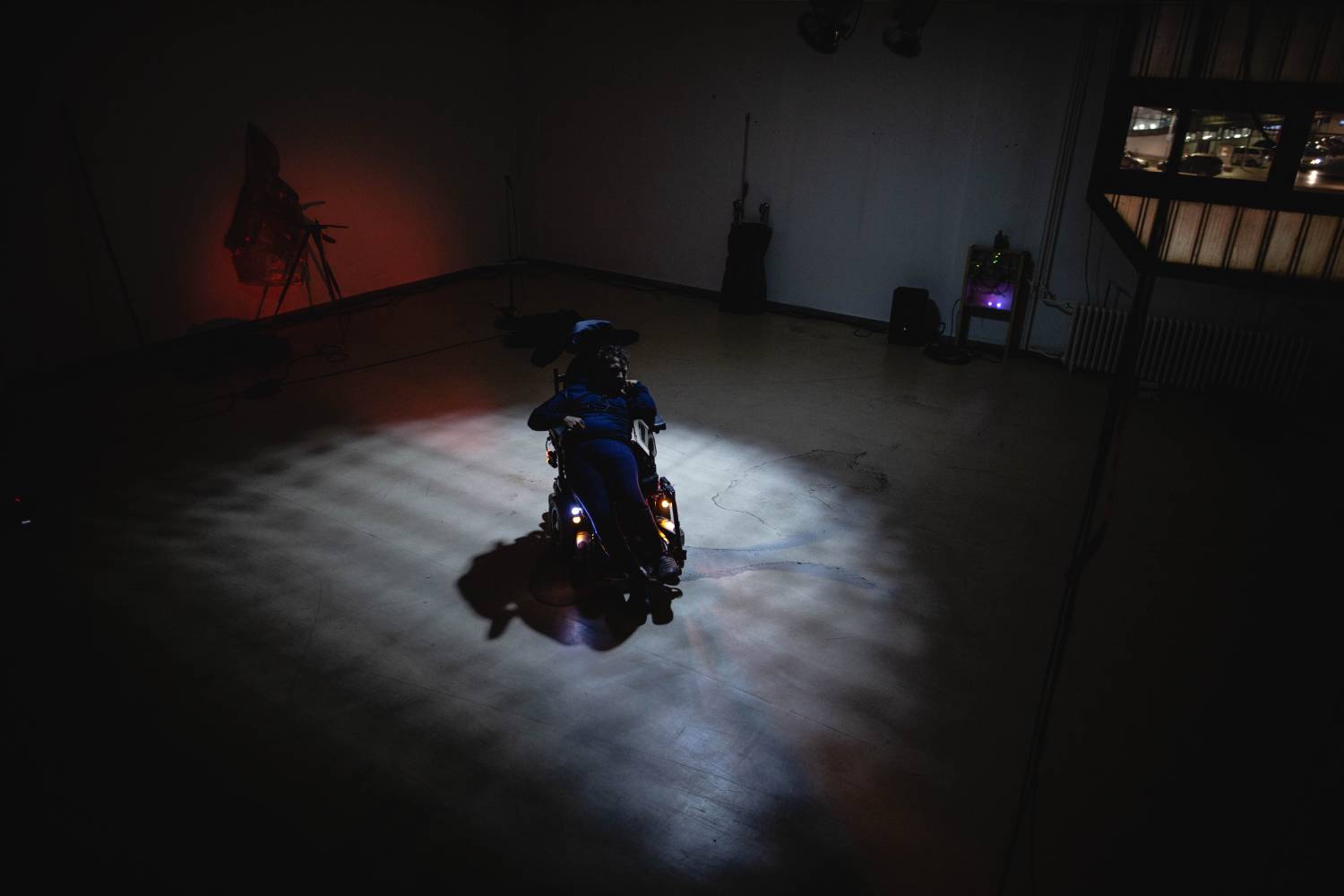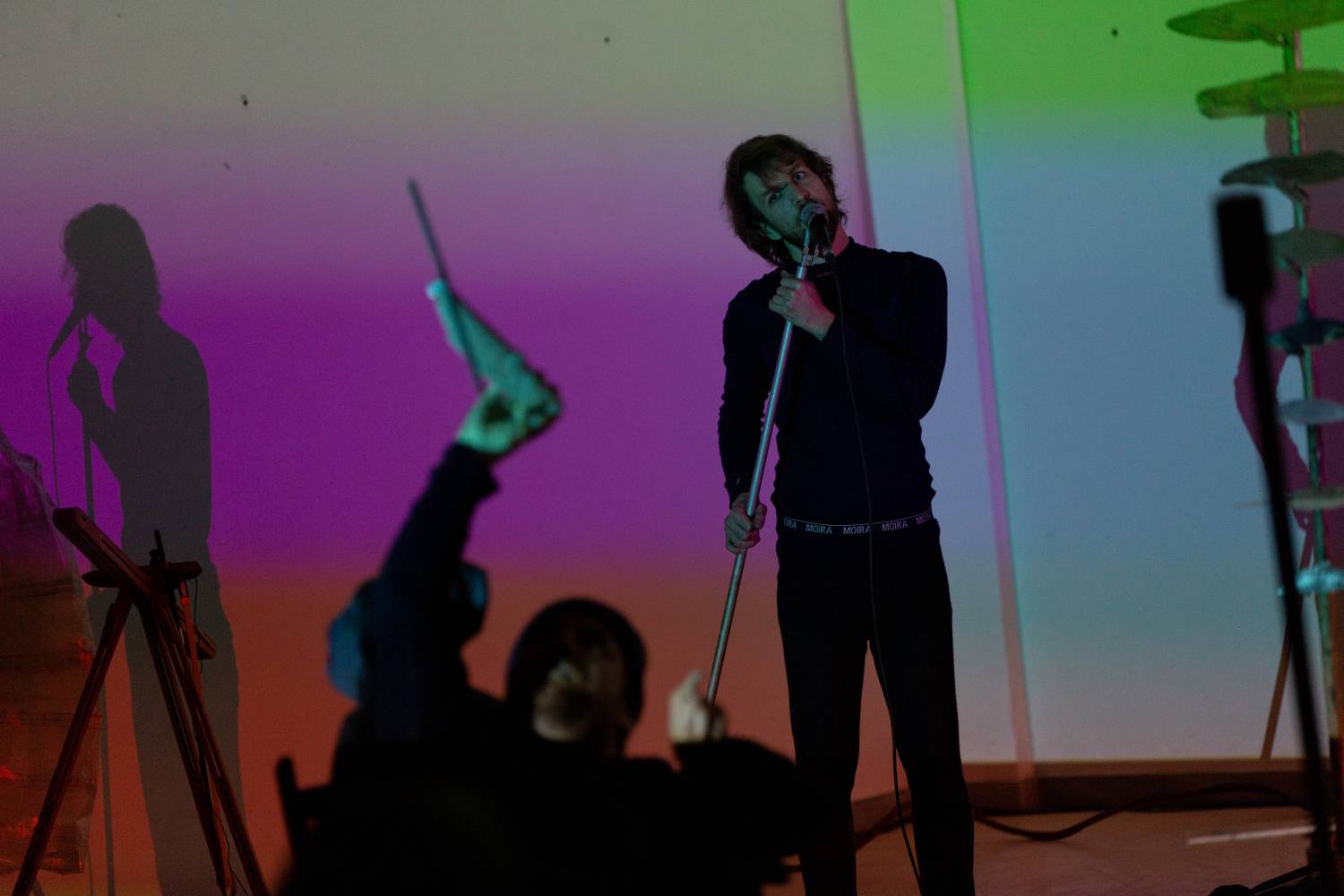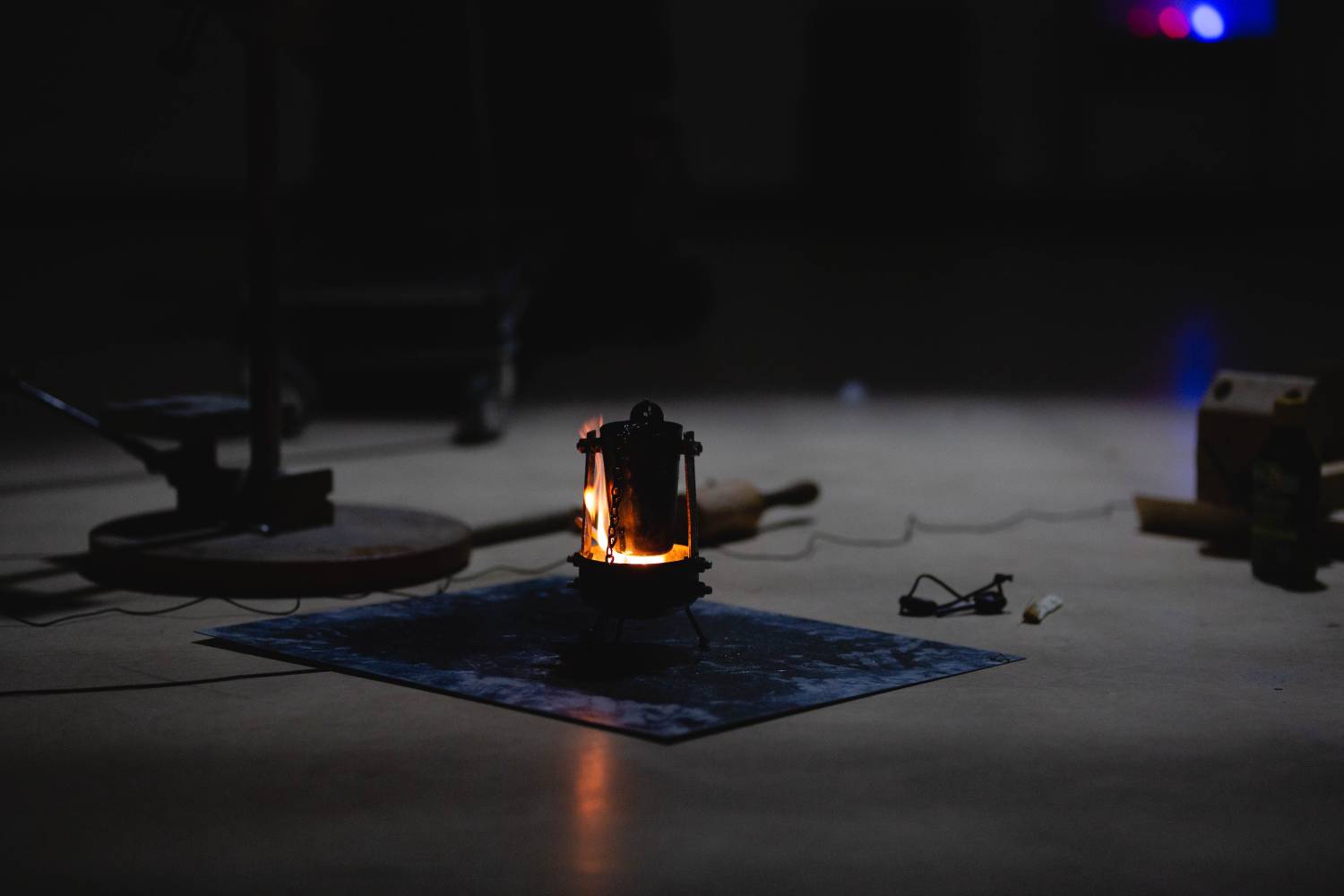A collective ritual and meditation over the questions of whether we can sustain our current manner of living and whether we stand on a brink of a dystopian future in which the largest and mightiest of animals that God has ever created, whales, will sacrifice their lives for our lifestyle.
The white whale appears in Moby Dick, a novel which, among other things, deals with the topic of extreme exploitation: not only in terms of natural resources, but also in terms of one another, our bodies and capabilities.
Melville’s work presents a kind of pre-Internet intertext in which the American author tried to thread together particles of an infinite system. In this novel already, the relationship between technology and tradition, modernity and mythology creates a tension. The presented play connects storytelling with technologies, encyclopaedic facts and lexicon entries with poetry, myths with everyday routine. It uses principles of decomposition, layers of associations, and individuality of scenic aspects. The viewers dive into the territory in which it is necessary to decide who deserves a bigger part of the loot, who will be sacrificed and who will carry out the sacrifice.
“Today, we will commemorate the story of captain Ahab and his crew. We will commemorate the story of Ishmael who was recruited to join Ahab’s crew on the ship called Pequod to sail the seas of the whole wide world on a quest for catching the most mythical of all whales – the giant white whale called Moby Dick. We will commemorate this whale which seemed impossible to trap. It reminds us of the transience of today’s world and the transience of our efforts. Three times Ahab tried to capture the whale and three times he failed. Let us commemorate captain Ahab whose pursuit drove him mad. He sacrificed his crew to the depths of the ocean. The only one to survive and tell the story that we commemorate today is Ishmael. Therefore, sisters and brothers, call me Ishmael for tonight.”
Loosely based on Herman Melville’s Moby Dick.









